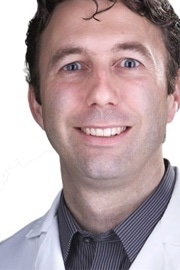In this interview, News Medical talks to Dr. Alfred Chappell of Ionis Pharmaceuticals about automated liquid handling in pharmaceutical research.
Please can you give a brief overview of your work at Ionis Pharmaceuticals?
In developing antisense therapeutics, scientists at Ionis evaluate thousands of oligonucleotides. One of my responsibilities is to oversee the QC and management of oligonucleotides used in target screening.
What is your specific workflow?
Our group receives lyophilized products that we reconstitute, determine stock concentrations, evaluate by mass spectrometry, and prepare normalized dilutions for evaluation by screening groups.
What impact has automated liquid handling had on your work?
We have one full-time position allocated to the preparation and management of nearly 100,000 compounds a year. Without automated liquid handling, we’d probably need 5 times as many people to handle our workflow.
Why did you choose the Biomek from Beckman Coulter?
The Biomek is extremely versatile and the user interface is quite intuitive. The dual arm FX with both a 96-well pipette head and Span-8 head with 8 variable pipettors provides a good balance of speed and tractability.
%20(002).jpg)
Image credit: Beckman Coulter
The system is can expand to accommodate our needs as our throughput increases over time. The icon-based controller software is relatively easy to use.
What are the main advantages of automated liquid handling over manual liquid handling in the context of your work?
Speed of processing samples and fidelity in sample handling are the key advantages of automated liquid handling.
Have you seen improvements in terms of throughput and sample savings?
We started with the Biomek system several years ago, processing a single 96-well plate of compounds at a time and could process three to four plates a day.
While normalizing a single 96-well plate of compounds manually is possible; it is labor intensive and prone to error. The Biomek could maintain this throughput and improve fidelity.
We easily expanded our system without any additional hardware to process three plates of compounds in parallel and three to nine plates daily.
With the addition of a plate hotel, we have expanded the system to handle up to 20 plates daily. Thus, we expanded our daily throughput 5-fold without any additional person-hours.
How long did the transition to automation take and what were the main hurdles?
Transitioning a simple procedure to automation is not difficult. We did this incrementally; breaking our procedure into different steps and having the Biomek handle the pipetting steps while manually performing steps like concentration determinations with a plate reader offline.
We eventually incorporated a plate reader to allow data collection by the Biomek; a barcode reader to improve fidelity and sample tracking; and a plate hotel to expand capacity.
The main hurdle is in expanding a system beyond just simply replicating what was being done manually. It was fairly straightforward to establish methods to handle one plate at a time, just mimicking how one might handle the protocol manually; however, it became rather complicated to develop methods to handle 20 plates a day.
We did not take advantage of scheduling software that is available and likely would have stream lined this transition.
What do you hope to achieve using automation in your lab in the future?
We will likely be doubling our throughput again in the next couple years. To accommodate this, I plan to expand a second Biomek FX system we have and take advantage of scheduling and data management software that is available.
Where can readers find more information?
Information about Ionis Pharmaceuticals can be found at www.ionispharma.com
Information about the BiomekFX liquid handler can be found at www.beckman.com
About Dr Alfred Chappell

Alfred Chappell is Assistant Director of Structural Biology at Ionis Pharmaceuticals.